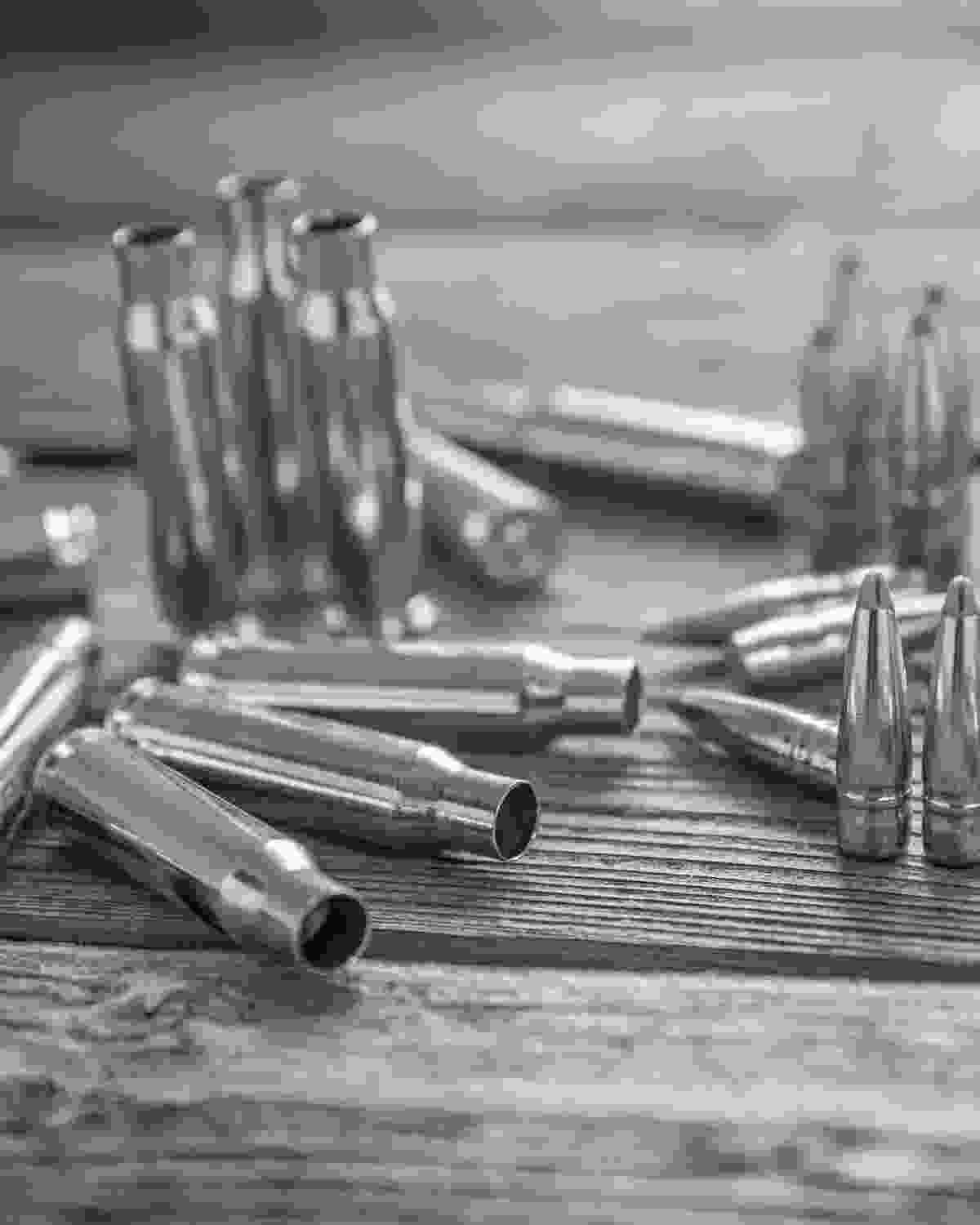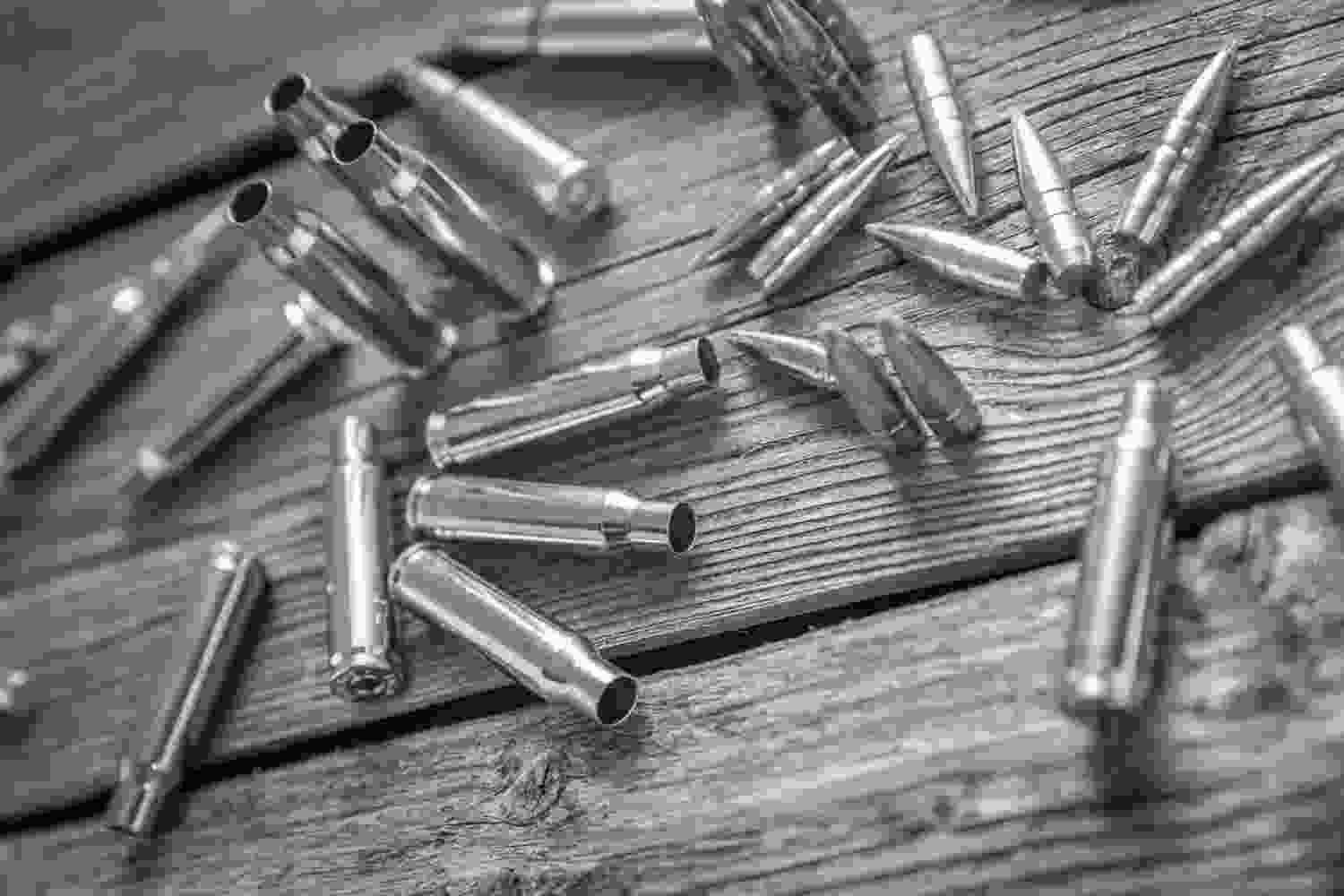Lead Free Reloading Component for Hunting
Copper, An alternative or simply a better bullet?
Discussions about copper bullets are taking place in Europe at an accelerating pace. The threat over the use of lead is strong, so the transition to the use of substitute materials increases the buzz around this topic.


Different type of big game bullet
Usually, magazine articles talking about copper and more traditional bullet types focus on the differences in bullets and how they function. This time we want to take a different route and focus on why copper bullets were developed in the first place. At that time, it was not about a replacement material but more about providing hunters with a completely different type of big game bullet.
The biggest problem with soft nosed big game bullets well into the 20th century was their durability at impact. Bullets either opened up too much or didn’t hold up on impact. This significantly reduced their penetration. It was common that the penetration of the bullets into the vital organs of the game was uncertain. The problem since the early days of smokeless gunpowder has been the same - the traditional cup and core bullets were unreliable when hunting big game.
Copper bullet mushrooming, factor of success
If bullet penetration alone was enough to bring down game animals, hunters would have probably never given up using solid or full metal jacket bullets. However, the opening of the bullet is an important feature as the tissue damage caused by the bullet in the vital organs is greater and the after shot runs of game animals are shorter.
The combination of reliable opening and sufficient penetration was in focus of many bullet makers. John Nosler developed the Nosler Partition bullet, where a partition ensures the butt of the bullet has enough mass to ensure sufficient penetration. The front part of the bullet ismore traditional thus the opening sensitivity remains strong. Later, Bill Steigers perfected "bonding", i.e., connecting the bullet's copper jacket and lead core to each other, and the result was the Bitterroot bullet. The later Swift A-Frame was an evolution of the partitioned Partition bullet with a lead core and copper jacket soldered together. The Trophy Bonded Bear Claw, on the other hand, was a solid copper bullet in its rear part while the lead core of the tip was bonded to copper.
One alternative to an opening and penetrating bullet that was developed in the 1980s and it entered the market at the end of that decade. It was the Barnes X where the lead core was completely removed. Randy Barnes, the developer of the bullet, first tried other structures, but ended up omitting lead completely in order to get rid of the front weight which had a negative effect on the accuracy of the bullet. The Barnes X was the first commercially available full-copper bullet that opened on impact and was guaranteed to penetrate.
Sako S20 Hunter Fusion
The Sako S20 rifle family is getting an update with a new model, the S20 Hunter Fusion. Equipped with the world reknown premium camo by First Lite and a barreled action in Tungsten Cerakoted. This combination offers performance, durability and features for demanding hunts.
READ MORE

Looking at history, one should primarily remember the reasons for the development of all these different bullet types. Large and perhaps also dangerous game requires a penetration-oriented action from the bullet, which is not as important when hunting small or medium-sized game animals. However, the benefit of a bullet that opens upon impact is so essential, that we wanted it to be part of big game hunting as well.
Prior to all these developments, traditional opening bullets had a remarkably small range of means to affect penetration. Crimps could be found on them, which were used to prevent the cup and core from separating from each other. However, the most typical method was to increase the mass of the bullets and thereby ensure their sufficient remaining weight and penetration. With the modern development steps, the weight of the bullets could be reduced without affecting the penetration, and this again achieved benefits in the field of longer shooting distances, for example.
So, copper bullets were not originally thought of as a bullet material to replace lead, but they were one way to make an opening, but penetrating bullet for big game hunting. The fact that they have later shown their potential also on a wider hunting front is just a sign that the working concept can be used more widely.
Copper ammunition, a tangible choice
Copper first came into focus as a replacement material in California, where the main cause of lead poisoning of condors was the remains of game animals shot with lead-containing bullets, which these wading birds ate. More recently, hunting bullets containing lead have been banned throughout the state. At the same time, the pressure to ban lead in hunting also began to increase in Europe, and now most of the cartridge manufacturers offer a lead-free alternative as a priority.
With the bans, copper is indeed seen as a replacement bullet material, because in such situations lead-containing bullets can no longer be used even for the purposes where it has its place. Throughout their history, solid copper bullets have had their challenges, especially in situations where the penetration potential of the bullet does not play a primary role, but where there is a demand especially for extreme accuracy and the fastest and most efficient opening sensitivity. Because of this, the lack of lead has been seen as a problem in some situations, although on the other hand it can be said that the copper bullet is the "better big game bullet".
Nowadays, copper bullets should also be put into a time perspective. Their history is quite short compared to bullets containing lead, so it is clear that it is an ever-evolving product group. Barnes X bullets alone have developed enormously since their early days, and since this manufacturer was practically the monopoly of copper bullets for a long time, it is clear that other manufacturers are clearly behind in this matter. We talk about a short timeline in terms of the development of bullets, but a lot has happened already in just over 30 years.
The Sako Blade bullet can be considered the latest significant Finnish milestone in the development of copper bullets. In its development, investment has been made specifically on the universality of the bullet and on the properties considered to be common weaknesses of copper bullets. With the renewed structure, this bullet model has been able to increase the opening sensitivity of the bullet and at the same time innovations have been made to improve the accuracy of the bullet. With this, the opening of bullets in small and medium-sized game has improved.
Hunting with Lead free bullets, an easy transition
In practice, the modern hunter is in an easier situation every year when it comes to transitioning to materials that replace lead. In terms of hunting, there are always fewer sub-areas for which copper bullets that at least work well are not available. Small, medium and large deer are already well-kept these days, but there are of course exceptions.
There are marginal sidetracks in hunting, where it may not make sense to maintain a lead-free supply in a commercial sense. Such are the hunting forms that are especially emphasized locally, of which we can mention, for example, the rifle hunting of grouse birds that is common in Fenno-Scandinavia. On the other hand, when hunting varmints, there are not necessarily lead-free alternatives to the so-called general purpose rifle calibers (6.5 mm and 30 cal) as the market is focused on more typical varmint calibers, i.e. .257” and smaller bullet diameters. In this case, however, it should be kept in mind that in these uses we are talking about replacement bullet materials, not so much about the alternative bullet construction in accordance with the theme of this article, which is represented by the solid copper bullet.
There are a lot of myths and beliefs associated with the use of copper, but these are usually from the early days of copper bullets.
As said, the history of big game bullets made of copper is quite short and most myths have their roots in the initial production of that type of bullet. Poor opening, the bullet falling on impact, poor accuracy, erradic pressure behavior and coppering of the barrel may have been true at the time, but unfortunately many people generalize these characteristics to the most modern copper bullets as well.
Divided into different generations
Currently, copper bullets can be divided into different generations, of which several have already developed, like the development of fighter aircraft. Currently, copper bullets are already on their fifth or sixth generation of the basic structure, depending on the calculation method. It goes without saying that generalizations about all bullets cannot be made based on their early stages of development. On the other hand, it must be remembered that several bullets representing different generations are still in use in new factory cartridges, so generalizing from one is not fruitful.
There are fundamental differences between copper bullets and lead bullets, and this is one of the most confusing factors for hunters. Firstly, copper is a lighter material than lead, so a bullet of the same weight made of copper will be longer than a bullet containing lead. On the other hand, copper is harder than lead, so this influences the opening of the bullet.
Blade bullets for the best results.
The heavy-duty quality of Sako reloading components meets the experienced hunters’ demands for accuracy and durability. Our bullets are designed to perform at the range and on hunts. Already successfully proven, our bullets deliver optimal weight retention and terminal performance upon impact.
READ MORE

The length of bullets in rifles is limited by the rifling, which is there to stabilize the bullet. Typical rates of twist are often from the era before copper bullets, so when switching to the use of copper bullets you have to be careful that the twist rate is enough to stabilize the bullet during its flight. The rotation speed also affects the opening of the bullet, i.e. it is important that the bullet has enough revolutions so it opens reliably on the target.
As a harder material, copper requires a high impact speed for the bullet to open reliably. This characteristic is especially emphasized in small and medium-sized game animals, where the immediate opening of the bullet is directly related to the effectiveness in putting the animal down. On the other hand, even for larger game, the bullet must open sufficiently so that the bullet maintains its directional stability when hitting. The tendency of a weakly opening bullet is often to fall on impact, and in that case its target effect is insufficient.
To increase the impact velocity, the simplest trick is to lighten the bullet, which gives it more muzzle velocity. In copper bullets, it is basically worth choosing a bullet that is at least one bullet weight class lighter than what you are used to with bullets containing lead. So if you have used a 30 cal bullet with a weight of 180 grains before, you should look at the bullet weight classes 150-168 grains for copper bullets, where the copper's properties can best be revealed.
When comparing copper bullets and lead bullets, it is worth remembering the history of the bullet weight classes to the extent that the reasons for the creation of the old standards are also remembered. In the olden days, weight was used to compensate for the weight loss that weakened the bullet's penetration, but with copper you shouldn't worry too much about this, because copper bullets basically stay together without losing weight. The same penetration is achieved with a copper bullet with a smaller mass.
Author: Arto Määttä - published on 4.4.2023



